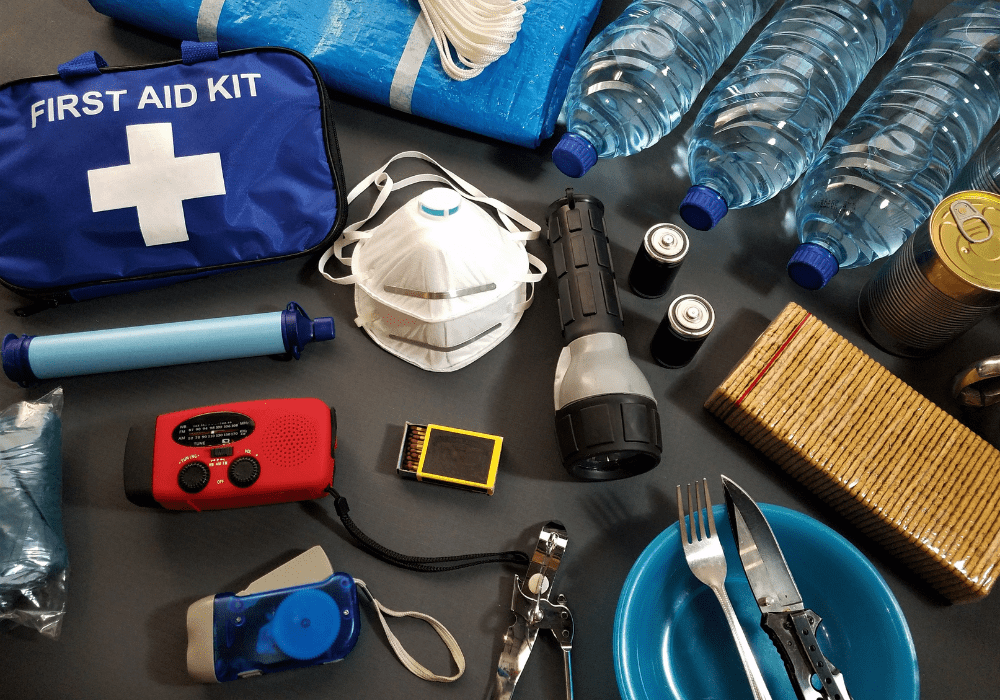
10 Pieces of Survival Gear Every Adventurer Needs In Their Pack
Estimated reading time: 6 minutes
Adventure is out there!
It can be a walk through your local woods, spelunking in a half-submerged cave, camping in a forest, or driving over rugged mountains.
Whatever form of adventure you like, you need to pack the correct gear.
While you may not use some gear on shorter adventures, it’s when you encounter a problem or an emergency that you’ll thank yourself for bringing it with you.
In the 1930s, The Mountaineers, a Seattle-based organization for climbers and outdoor adventurers, made a list of the 10 essentials for camping and hiking.
The original list included gear that, at the time, no adventurer could go without.
This list has evolved through the decades but the idea is still the same:..
Bring only what you need.
Table of Contents
Prepare for Adventure
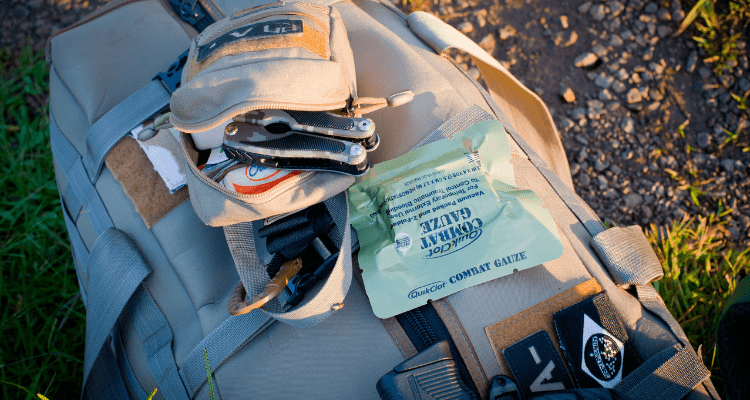
Below you’ll find our version of the 10 adventuring essentials list. All entries are essential and aren’t arranged according to rank.
1. Navigation: Map, Compass, GPS Device, & more
Unless you’re on a short, impossible-to-get-lost footpath or a trail you know by heart, you’re going to need a topographic map.
Now that you have a map, bring along a compass. These two items used in tandem will make it easier to find your way. You can even get a compass with a sighting mirror to flash sunlight at a rescuer or helicopter in case of an emergency.
While most modern phones come with GPS, time-keeping, and compass, it’s a good idea to bring something analog so you’re not dependent on batteries.
Getting a true satellite GPS device lets you find your location on a digital map. This can be more accurate than a map and compass.
Yes, your smartphone can have a GPS app, but your phone isn’t as robust, weatherproof, and economical on battery life as a dedicated outdoor GPS device.
Also, your phone is connected to cell towers, not satellites, unless you specifically purchased a satellite phone.
2. Sun protection: Sunglasses, Sunscreen, Shemagh
Sun protection is vital when hiking in the backcountry. Not even overcast days can save you from sunburn if you aren’t prepared.
When it comes to sunglasses, look for both UVA and UVB protection. UVB rays can burn your skin and can cause the development of cataracts. You should also get sunglasses with polarized lenses if you’re going anywhere near water or snow.
As with any activity where you’re out in the sun for prolonged hours, you’ll want sunscreen to protect against UV rays.
These rays cause sunburn, premature aging, and potentially worse. To counter this, look for a sunscreen that blocks both UVA and UVB rays with at least SPF (sun protection factor) SPF30.
3. First Aid: Kit or A La Carte Supplies
You never know when you’ll run into an emergency while on your trip.
Including a first aid kit or supplies in your pack lets you deal with or at least lessen the emergency while waiting for help to arrive.
If you don’t know what to bring along, get a pre-assembled first aid kit. These kits come with things like various-sized adhesive bandages, gauze pads, disinfecting ointment, adhesive tape, over-the-counter pain medication, tourniquet and treatment for blisters. You can also look for a kit that includes nitrile gloves and a stitches.
The number of supplies you carry will depend on the length of your trip. It’s also a good idea to bring along a guide on how to give first aid.
Here’s how to make a camping survival kit.
4. Tools: Multitool, Gear Repair Kit, Knife or Gun
Carrying a good multitool can help you deal with a lot of situations on your adventure.
The more complex activities you need to do, the more tools you’ll need to have. Sometimes all you need is a simple folding knife while at other times you might need a flathead screwdriver, a can opener, or a saw.
Depending on the length of your trip, you may also want to carry a gear repair kit. This kit usually comes with cordage, duct tape, zip ties, a fabric repair kit, safety pins, and much more. You can use this kit for just about anything and comes in real handy the more remote the place you’re going.
5. Fire: Waterproof matches, Lighter, Firestarter
Being able to produce fire quickly is vital while out in the backcountry. It keeps you warm, lets you cook food, boils water, provides light, and keeps the animals away.
Bring along a disposable butane lighter or a fuel-free lighter that uses electricity to form twin top-facing arcs. Your lighter should be weatherproof, lightweight, and can include some tinder and flashlight.
You can’t trust flimsy convenience-store matches when it comes to the outdoors. You’ll need sturdy waterproof matches as a precaution instead.
You can also bring along a firestarter kit which can come in the form of dry tinder secured in a plastic bag, some candles, priming paste, chipped-wood clusters soaked in resin called “heat nuggets”, or even lint trappings from your household clothes dryer.
6. Shelter: Blanket or Lightweight Bivy
Whatever the duration of your trip, it’s always a good idea to bring along some type of emergency shelter as protection from the wind and rain in case you need it.
While you may have a tent, you can’t carry it with you wherever you go. A bivy sack, an emergency space blanket, an ultralight tarp, or even a large plastic trash bag can do the job.
7. Nutrition: Beyond Minimum Expectation
While not really “gear” in the strict sense of the word, extra food will always be one of the essentials. Make sure to bring along more than you think you’ll need — at least an extra day’s worth.
You can bring along nutrition bars or dehydrated meals at the bottom of your pack. Make sure your food consists of high-calorie and nutrient-dense items that last a long time in your pack. Energy bars, dried fruits, nuts, or jerky are perfect.
8. Hydration: Beyond Minimum Expectation
Along with extra food, you also need to bring extra water on your trip. You can take a large robust water bottle, a hydration bladder, or a collapsible water reservoir.
On longer trips, you may also want to pack something that lets you treat the water you find on the trail. This can be in the form of a water filter/purifier, chemical treatment tablets or drops, or a stove for melting snow.
9. Insulation: Extra Clothing
The number of spare outfits you carry will depend on the duration and location of your adventure. If you’re camping, you need just three outfits: the one you’re wearing, an extra set, and one you’ll use as your “pajamas” while in your tent.
If you’re going somewhere with a hot climate, make sure your clothes are lightweight, breathable, and sweat-wicking.
10. Communication: Cellphone or Sattelite Phone
While you may already have your smartphone, it’s always a good idea to carry a two-way satellite phone or messenger as a backup.
Don’t rest easy that you have it. Pretend like you don’t already have it in your pack so you can still make the same preparations you do before your trip like informing a friend, a family member, and a park ranger (if you’re adventuring in a park).


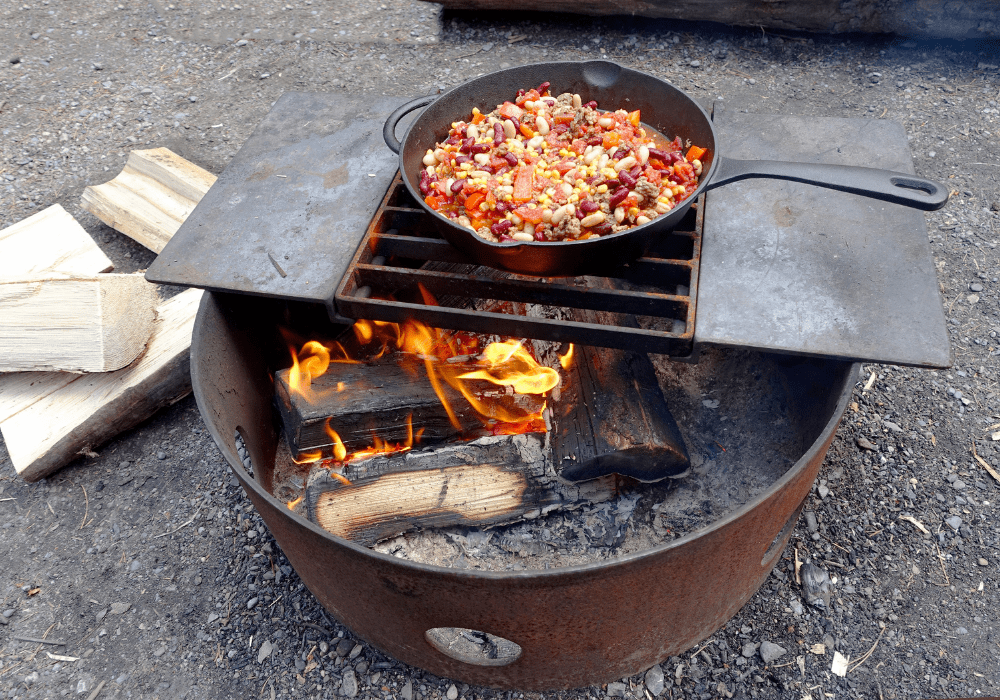
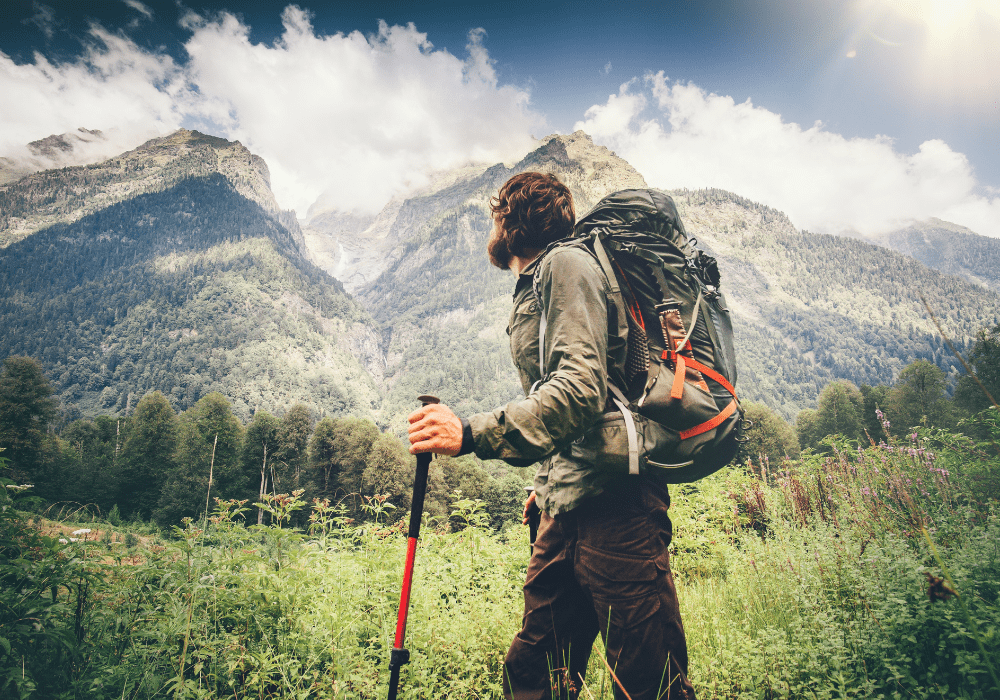
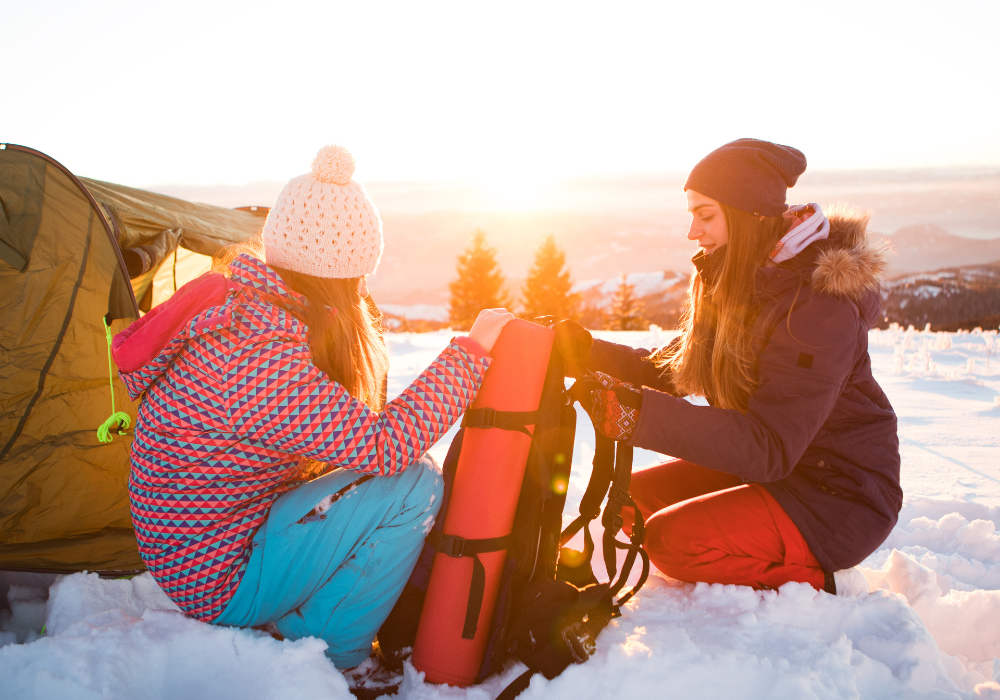
Pingback: 10 Life Saving Tips To Remember For Your Next Backpacking Trip - Thoughts On Life And Love
Pingback: 8 Things You Can't Forget On Your Next Camping Trip